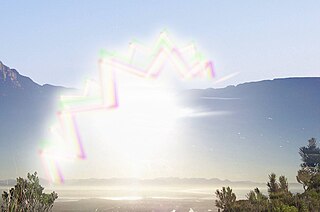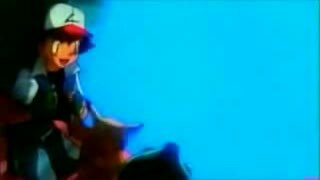Related Research Articles

Epilepsy is a group of non-communicable neurological disorders characterized by recurrent epileptic seizures. An epileptic seizure is the clinical manifestation of an abnormal, excessive, and synchronized electrical discharge in the neurons. The occurrence of two or more unprovoked seizures defines epilepsy. The occurrence of just one seizure may warrant the definition in a more clinical usage where recurrence may be able to be prejudged. Epileptic seizures can vary from brief and nearly undetectable periods to long periods of vigorous shaking due to abnormal electrical activity in the brain. These episodes can result in physical injuries, either directly such as broken bones or through causing accidents. In epilepsy, seizures tend to recur and may have no detectable underlying cause. Isolated seizures that are provoked by a specific cause such as poisoning are not deemed to represent epilepsy. People with epilepsy may be treated differently in various areas of the world and experience varying degrees of social stigma due to the alarming nature of their symptoms.

A seizure is a period of symptoms due to abnormally excessive or synchronous neuronal activity in the brain. Outward effects vary from uncontrolled shaking movements involving much of the body with loss of consciousness, to shaking movements involving only part of the body with variable levels of consciousness, to a subtle momentary loss of awareness. These episodes usually last less than two minutes and it takes some time to return to normal. Loss of bladder control may occur.
Photosensitive epilepsy (PSE) is a form of epilepsy in which seizures are triggered by visual stimuli that form patterns in time or space, such as flashing lights; bold, regular patterns; or regular moving patterns. PSE affects approximately one in 4,000 people.
Light sensitivity or photosensitivity refers to a notable or increased reactivity to light. Apart from vision, human beings have many physiological and psychological responses to light. In rare individuals an atypical response may result in serious discomfort, disease, or injury. Some drugs have a photosensitizing effect. Properties of natural or artificial light that may abnormally affect people include:
Pokémon is an anime television series that originally debuted in Japan on April 1, 1997. Throughout its run of over 1,200 episodes, specific episodes have been unaired or pulled from rerun rotation in certain countries while others have been altered or entirely banned, some of which include racial stereotyping such as Jynx and the characters appearing in blackface. Notably, the globally banned episode "Dennō Senshi Porygon", which aired only once on Japan's TV Tokyo on December 16, 1997, features a series of rapidly alternating red and blue frames that provoked epileptic seizures in hundreds of children.

An aura is a perceptual disturbance experienced by some with epilepsy or migraine. An epileptic aura is actually a minor seizure.

"Dennō Senshi Porygon" is the 38th episode of the Pokémon anime's first season. Its sole broadcast was on TV Tokyo in Japan on December 16, 1997. The episode was written by Junki Takegami and directed by Kiyotaka Isako.
Reflex seizures are epileptic seizures that are consistently induced by a specific stimulus or trigger, making them distinct from other epileptic seizures, which are usually unprovoked. Reflex seizures are otherwise similar to unprovoked seizures and may be focal, generalized, myoclonic, or absence seizures. Epilepsy syndromes characterized by repeated reflex seizures are known as reflex epilepsies. Photosensitive seizures are often myoclonic, absence, or focal seizures in the occipital lobe, while musicogenic seizures are associated with focal seizures in the temporal lobe.
Sudden unexpected death in epilepsy (SUDEP) is a fatal complication of epilepsy. It is defined as the sudden and unexpected, non-traumatic and non-drowning death of a person with epilepsy, without a toxicological or anatomical cause of death detected during the post-mortem examination.

The Epilepsy Society is the largest medical charity in the field of epilepsy in the United Kingdom, providing services for people with epilepsy for over 100 years. Based in Chalfont St Peter, Buckinghamshire, UK, its stated mission is "to enhance the quality of life of people affected by epilepsy by promoting research, education and public awareness and by delivering specialist medical care and support services." The Epilepsy Society has close partnerships with the National Hospital for Neurology and Neurosurgery and the UCL Institute of Neurology, both located in Queen Square, London.
Juvenile myoclonic epilepsy (JME), also known as Janz syndrome or impulsive petit mal, is a form of hereditary, idiopathic generalized epilepsy, representing 5–10% of all epilepsy cases. Typically it first presents between the ages of 12 and 18 with myoclonic seizures. These events typically occur after awakening from sleep, during the evening or when sleep-deprived. JME is also characterized by generalized tonic–clonic seizures, and a minority of patients have absence seizures. It was first described by Théodore Herpin in 1857. Understanding of the genetics of JME has been rapidly evolving since the 1990s, and over 20 chromosomal loci and multiple genes have been identified. Given the genetic and clinical heterogeneity of JME some authors have suggested that it should be thought of as a spectrum disorder.
Flicker vertigo, sometimes called the Bucha effect, is "an imbalance in brain-cell activity caused by exposure to low-frequency flickering of a relatively bright light." It is a disorientation-, vertigo-, and nausea-inducing effect of a strobe light flashing at 1 Hz to 20 Hz, approximately the frequency of human brainwaves. The effects are similar to seizures caused by epilepsy, but are not restricted to people with histories of epilepsy.
The Epilepsy Foundation, also Epilepsy Foundation of America (EFA), is a non-profit national foundation, headquartered in Bowie, Maryland, dedicated to the welfare of people with epilepsy and seizure disorders. The foundation was established in 1968 and now has a network of 59 affiliates. The foundation's programs aim to "ensure that people with seizures are able to participate in all life experiences; and to prevent, control and cure epilepsy through research, education, advocacy and services."

"Flashing Lights" is a song by American rapper Kanye West from his third studio album, Graduation (2007). The song features a guest appearance from R&B singer Dwele and additional vocals from Australian singer Connie Mitchell. West co-wrote and co-produced the song with Eric Hudson, who had completed the production before the duo added a live string section in 2007. It was released to US rhythmic contemporary radio as the album's fourth single on November 20, 2007, by Roc-A-Fella Records and Def Jam Recordings. A hip hop, electro rap, and R&B song with elements of numerous genres, it prominently utilizes strings and synths. Lyrically, the song features West rapping about a complicated relationship where a girl has power over him; he also compares the paparazzi to Nazis.
The term Harding test is generically understood to mean an automatic test for photosensitive epilepsy (PSE), triggered by provocative image sequences in television content. This is properly known as a PSE test since the publication of the Digital Production Partnership (DPP) technical requirements and the DPP PSE Devices document updated in November 2018.

Ravelry is a free social networking service and website that beta-launched in May 2007. It functions as an organizational tool for a variety of fiber arts, including knitting, crocheting, spinning and weaving. Members share projects, ideas, and their collection of yarn, fiber and tools via various components of the site.
Generally, seizures are observed in patients who do not have epilepsy. There are many causes of seizures. Organ failure, medication and medication withdrawal, cancer, imbalance of electrolytes, hypertensive encephalopathy, may be some of its potential causes. The factors that lead to a seizure are often complex and it may not be possible to determine what causes a particular seizure, what causes it to happen at a particular time, or how often seizures occur.
"All of the Lights" is a song by American rapper Kanye West, released as the fourth single from his fifth studio album, My Beautiful Dark Twisted Fantasy (2010). It was produced by West and features additional vocals from several other recording artists, including Drake, John Legend, The-Dream, Alicia Keys, Fergie, Elton John, Ryan Leslie, Charlie Wilson, Tony Williams, La Roux, Alvin Fields, Ken Lewis, Kid Cudi, and Rihanna; the latter two are credited on the official music video and single version, but not on the album version. It is often played along with its accompanying interlude "All of the Lights (Interlude)", which precedes the song on the album's tracklist.

Fluorescent lamps have been suggested to affect human health in various ways.

The Incredibles is an American media franchise created by Pixar Animation Studios. Brad Bird wrote and directed both films, and Craig T. Nelson, Holly Hunter, Sarah Vowell, and Samuel L. Jackson are part of the cast. The first film, The Incredibles, was released in November 5, 2004 and received acclaim from critics, winning the Academy Award for Best Animated Feature. The second film, Incredibles 2, was released in June 15 2018, received mostly positive reviews and set the record for best opening weekend for an animated film with $183 million. The series has grossed a combined $1.8 billion worldwide.
References
- 1 2 "Epilepsy Action History Wall 1950-2010" (PDF). Epilepsy Action. Archived from the original (PDF) on 4 October 2015. Retrieved 16 March 2023.
- ↑ "British Epilepsy Association, registered charity no. 234343". Charity Commission for England and Wales.
- 1 2 3 4 5 "TRUSTEES' REPORT AND FINANCIAL STATEMENTS FOR THE YEAR ENDED 31 DECEMBER 2023" (PDF). Epilepsy Action. Retrieved 19 May 2024.
- ↑ "Council of Management". Epilepsy Action. Retrieved 17 March 2023.
- ↑ "'3,000 runners tackle Bradford's biggest ever 10K'". Telegraph and Argus. 17 March 2019. Retrieved 26 February 2020.
- ↑ Bond, David (13 June 2007). "Olympics inquiry into logo-launch seizures". ISSN 0307-1235.
- ↑ "London 2012 Olympics withdraw film after seizures". Epilepsy Action. 6 June 2007. Archived from the original on 23 November 2007. Retrieved 24 March 2023.
- ↑ "'Kanye West's 'All Of The Lights' Video Gets Epilepsy Warning'". MTV News. 25 February 2011.
- ↑ "'Epilepsy charity criticises Twitter for flashing ads'". BBC News. 10 July 2015.